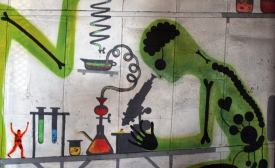science and technology
August 24 marked the 25th anniversary of the establishment of diplomatic ties between China and South Korea. Since the establishment of formal diplomatic relations in 1992, both countries have been jointly celebrating the anniversary every five years. This year, China sent its science and technology minister to a South Korean embassy event in Beijing.
The Ministry of External Affairs is going to use documentaries to showcase India in the international arena as a part of its effort to strengthen India’s “soft power”. The External Publicity & Public Diplomacy (XPD) Division of Ministry of External Affairs has invited proposals from filmmakers to make documentary on “India—a science and technology super power” and three separate documentaries that will cover the architectural, cultural and natural heritage of India.
A new online tool enlists citizen scientists to help archaeologists.
Science diplomacy can of course help countries solve on-the-ground challenges and improve standards of living for their citizens. But it can also lay groundwork for improving relations in a region often defined by tension (if not outright conflict) through functional, scientific cooperation that is less politicized.
The Foreign Ministers of Armenia and Indonesia Edward Nalbandian and Retno Marsudi held a meeting in Jakarta today. The parties discussed the development of bilateral relations, as well as a number of urgent issues on regional and international agenda. They attached importance to the intensification of the political dialogue between the two countries, expand the legal framework, encourage educational and cultural exchange.

The biggest existential threats, such as climate change and pandemics, are best tackled through science diplomacy.
New Zealand, seen as the nation of cows, could soon become the nation with the highest frequency of space launches anywhere in the world. A relatively uncongested airspace and an appetite for new technologies, meant Airways had already helped about 120 near-space launches in New Zealand airspace, and Nasa and Google had both chosen the country for balloon launches.
The purpose of the exhibition is both public diplomacy and making science accessible to Israelis. A recent Ministry of Science survey painted a worrying picture regarding the Israeli public's familiarity with scientific topics and central figures.







